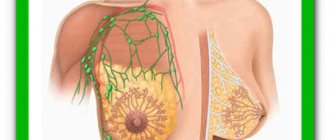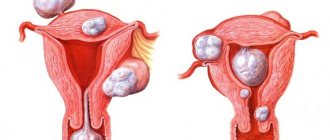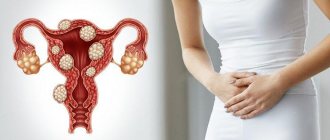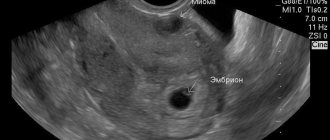Last update: 10/07/2019
The first question that interests a woman diagnosed with uterine fibroids is, “Can the fibroids resolve on their own, or will they have to undergo surgery to remove them?” There is no definite answer to this; it all depends on many factors; the doctor makes the decision, taking them into account. But in any case, do not panic or become depressed.
- Myoma, what is it?
- Diagnosis and symptoms
- To delete or not
- Myoma sizes
- Locations of fibroids
- Pregnancy and uterine fibroids
- Uterine fibroids during menopause
- Treatment methods
- Video about mime
Remember that this diagnosis is made to approximately one in three women of childbearing age and is one of the most common gynecological diseases.
Myoma, what is it?
Fibroids are benign tumors that form from muscle or connective tissue. There are several types:
- Fibroids. This fibroid is most often found in women.
- Leiomyomas. Rarely found in its pure form, it usually develops into a soft fibroid. May develop in the ligaments of the uterus and vagina. There are usually no symptoms, so it is discovered during surgery.
- Rhabdomyomas. This type of tumor is very rare and does not form on the uterus. It is usually found in the genitourinary organs and kidneys.
- Myosarcoma. This is the only type of fibroid that is caused by a malignant course. They grow quickly, are dangerous, and therefore require surgical intervention.
The main cause of uterine fibroids is considered to be constant hormonal changes occurring in the body. The level of female hormones changes depending on the emotional state of the woman. Pregnancy, stress, abortion, puberty, menopause - all this can cause a hormonal surge and lead to an increase in estrogen levels. This, in turn, leads to the growth of the endometrium, which, as it grows, contributes to the formation of fibroids. Fibroids can form both in the cavity and on the outer surface of the uterus. Whether uterine fibroids can resolve or will have to be removed depends on timely and correct diagnosis.
Can it resolve on its own?
Myoma is a tumor of muscle tissue. Most often, connective tissue is also attached to it, in this case it is more correct to talk about nodes or fibroids. In its structure, it is a dense tumor that cannot disappear on its own and without a trace. However, it all depends on the size of the fibroids, the number of nodes, and the woman’s age.
It is known that the growth of fibroids depends on the level of a woman’s sex hormones. Therefore, tumors are almost always detected only during reproductive age; detection of such tumors for the first time in menopause is a bad sign; most likely it is a malignant tumor.
With the onset of natural menopause, the level of estrogens and gestagens rapidly drops, which means that there is no “feeding” for the growth of nodes, and they gradually decrease in size. Complete regression of the tumor in menopause can occur if previously the woman’s nodes were not large, up to 3-4 cm in diameter. All fibroids that have large parameters are reduced, but are still detected during examination and ultrasound.
However, such a reduction is sometimes enough so that the tumor no longer bothers, for example, does not put pressure on the surrounding tissues - the bladder and ureters, the rectum.
Also, some reduction in nodes or at least a slowdown in their growth is observed with prolonged breastfeeding. This is also due to low estrogen levels.
Expert opinion
Daria Shirochina (obstetrician-gynecologist)
There is no reliable scientific evidence that fibroids can resolve on their own when using currents and other types of alternative therapy, about which you can find many reviews on the Internet. Most likely, if this were possible, the treatment method would be officially accepted.
Diagnosis and symptoms
Most often, fibroids in the uterus are asymptomatic and are diagnosed accidentally during a gynecological examination. Therefore, this disease is difficult to detect in the initial stage. But the sooner treatment is started, the greater the chance of avoiding surgical intervention.
There are signs when you should contact a gynecologist as soon as possible:
- constant aching pain in the lower abdomen, radiating to the lumbar region;
- heavy and prolonged menstruation (more than seven days);
- intermenstrual discharge;
- difficulty urinating;
- constant weakness and dizziness;
- frequent constipation.
Even if these symptoms are not observed, it is necessary to undergo an examination by a gynecologist at least once a year. And for women from the so-called risk group, at least every six months. This group includes women:
- during the premenopausal period;
- after an abortion;
- have had an ectopic pregnancy;
- with problems of the endocrine system and thyroid gland;
- with a lot of excess weight.
Can thyroid nodules resolve on their own?
Almost every visitor to an endocrinologist who has been diagnosed with a lump asks whether a nodule in the thyroid gland can resolve without any surgical action.
Before giving a definite answer, the doctor must understand the cause of the disease. According to WHO statistics, this problem is faced mainly by women due to unstable hormonal levels. Below we will talk about what and how to resolve thyroid nodules, and why this disease occurs.
Myoma sizes
It is well known that the smaller the benign formation, the greater the chance that it will go away on its own. Since the uterus grows as the tumor grows, the size is determined in weeks of pregnancy. For example:
- 6-8 weeks—small size (less than 2.5 cm);
- 8-12 weeks—average size (from 2.5 to 7 cm);
- over 15—large size (over 7 cm).
Small tumors very often resolve on their own due to a decrease in estrogen in the body. Secondary formations also do not require surgical intervention, and with proper hormonal therapy they go away on their own. Large tumors require removal.
Sometimes several nodules of different sizes are found in the uterus. In this case, the chances of avoiding surgery are much less than with single benign tumors. Very often, so-called mobile fibroids resolve.
The location of the fibroids also plays a significant role.
Locations of fibroids
The tumor can be located in various places:
- from the outside of the uterus, can grow into the abdominal region (subserous);
- uterus, grows evenly in muscle tissue (interstitial);
- middle section of the uterine muscles (intramural);
- deep in the uterine cavity, under the endometrium (submucosal).
Patients who have been diagnosed with interstitial or subserous have the best chance that it will resolve on its own. If, moreover, the tumor is small and no further growth is observed, then it is enough to undergo an examination every six months, carry out preventive treatment, and the answer to the question of whether the fibroid can resolve on its own will be positive.
Intramural, usually accompanied by pain in the pelvic area, cycle disruption, and therefore requires constant monitoring, and if the condition worsens, removal. Submucosal tumors grow quickly, cause heavy bleeding and severe pain, so surgical intervention is necessary. Sometimes, after another examination, the doctor states that the fibroid has resolved on its own. This very often goes away after pregnancy and during menopause.
Features of disease diagnosis
The only accurate way to identify nodes is ultrasound. Often, inexperienced doctors, after palpation, prescribe medications with iodine for prophylaxis to the patient, believing that they have discovered a lump.
In reality, an accumulation of fat around the thyroid gland or an overly protruding lobe of the organ is often mistaken for a tumor. Ultrasound helps to avoid such mistakes.
This diagnostic method allows:
- see the circulatory system of the organ;
- evaluate tissue structure;
- identify mini-cysts from 1 mm in diameter.
The treatment plan is drawn up based on the results of a blood test from the veins for the content of hormones and antibodies. If the tumor is too large or has many dark areas, doctors take some of the tissue for laboratory examination.
Also popular methods for studying the thyroid gland are CT and MRI. The endocrinologist selects the appropriate diagnostic method.
Pregnancy and uterine fibroids
Often, fibroids are first discovered when a woman registers for pregnancy. And then the pregnant woman has a question whether the fibroid can disappear on its own, whether it will harm the unborn child if it is not removed.
For small and medium-sized tumors, nothing will prevent you from carrying and giving birth to a healthy baby. You just need to constantly monitor its size. After all, during pregnancy a huge amount of estrogen is produced, and this can provoke the growth of neoplasms.
The only indication for surgical removal may be the large size of the tumor, which can cause premature birth or interfere with the development of the baby. In some cases, during the postpartum period, small fibroid nodes, with a decrease in female hormones, resolve completely.
Uterine fibroids during menopause
During menopause, there is a gradual decrease in the production of female hormones. Their level drops and a minimal amount is produced during menopause. And since favorable conditions for the occurrence and growth of fibroids are a high level of estrogen, when it decreases, a decrease in size is observed and the tumor gradually begins to resolve. But this does not always happen. Most often, small and medium-sized fibroids resolve. But large fibroids rarely go away on their own.
A woman should constantly visit a gynecologist to monitor the tumor. And if within six months after the onset of full menopause there is no decrease in fibroids, or, in general, it increases, the gynecologist may recommend surgery to remove the uterus. This is also done as a preventive measure against its degeneration into myosarcoma.
By the way, during menopause, women who are overweight have a much lower chance of getting rid of a tumor without surgery. This is due to a higher content of estrogens, which accumulate in fatty tissues. Therefore, even after the production of these female hormones ceases, it can continue to grow due to their reserves.
How to speed up the resorption process
In order for the growths to disappear, a person needs to reconsider his usual way of life. It is as a result of disturbances in the functioning of the body that adipose tissue grows.
We recommend reading:
- How to remove wen at home
- Inflammation of atheroma
- Why is HPV type 18 dangerous for women?
Diseases are provoked by the following factors:
- hormonal disbalance;
- disruption in the endocrine system;
- metabolic problems;
- obesity.
By stopping these processes, presumably, it is possible to slow down the growth of the tumor, and even start the reverse process. To do this, you should streamline your food intake, make it complete and rich in vitamins. It is better to avoid fatty, smoked, too spicy and salty foods. You also need to eliminate excessive consumption of alcohol and tobacco products from your life.
It is impossible to guarantee that wen will disappear. Nevertheless, such a possibility exists. The main thing is not to try to facilitate this process. Do not pick, squeeze or puncture the lipoma. This will not give the desired result, but on the contrary, it will aggravate the existing condition.
The only sure guarantee of eliminating a benign neoplasm is its complete excision.
Only in this case will it be possible not only to get rid of the lipoma, but also to prevent its reappearance. A person can choose the most optimal operation option for himself, guided by the doctor’s recommendations.
Treatment methods
In order to avoid surgery, sometimes it is enough to normalize the hormonal balance. Correctly selected hormonal treatment helps not only to reduce the size and number of fibroids, but leads to their complete resorption.
In addition to medications, a gynecologist may prescribe physiotherapeutic procedures. Following special diets gives a good effect.
Oral contraceptives are most often prescribed as hormonal drugs. They are prescribed when small uterine fibroids are observed, which do not exceed 7 cm. However, their use will not help with large tumors. All medications that lead to suppression of estrogen production by the ovaries, resulting in changes in hormonal levels, are carried out only as prescribed by a gynecologist. Self-use can provoke not only growth, but also lead to tumor degeneration.
Resorption of fibroids can be facilitated by magnet and herbal medicine sessions. After these procedures, blood flow to the damaged area increases, metabolism is normalized, and gradually it decreases and finally resolves.
Myomas that are small in size respond well to treatment with folk, homeopathic remedies. Women need to eat flower honey, mumiyo, royal jelly, and walnut oil.
To resolve fibroids, you can drink herbal infusions:
- potato color;
- cat claw;
- dry cucumber tops;
- hog uterus.
Non-traditional methods of treating uterine fibroids include aromatherapy. As you know, essential oils contain phytohormones, which have a beneficial effect on the body. For sessions, use basil oil, or a mixture of it in equal proportions with rose oil. You can also inhale fir oil. During the session, not only does blood circulation in the fibroid nodes normalize, but also immunity increases.
All methods of treating fibroids should be used only after consultation with a doctor and under his supervision. Do not neglect examination and tumor control. When treating fibroids, you cannot hope for luck and assume that it will resolve on its own. Only by following the doctor’s recommendations can you avoid the sad consequences of uterine fibroids and cure it without surgery.
Thyroid functions
This organ of the endocrine system produces hormones that regulate all important functions of the body. The thyroid gland determines a person’s metabolic rate, his growth, mental state, and regulates sexual activity.
With various pathologies, the amount of hormones produced may decrease, which will lead to malfunctions of all organic systems.
Nodules are formed under the influence of thyrotropin. At high concentrations of the hormone, thyrocytes begin to accumulate thyroglobulin.
An excess of protein leads to an increase in follicular walls and to further compaction of organ tissue. As a result, colloidal nodes are formed. Often this process occurs without any symptoms, so patients notice the disease when the tumor has already formed.
Can a nodule in the thyroid gland resolve?










